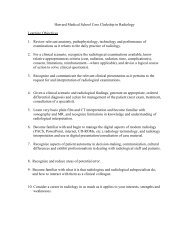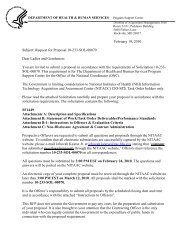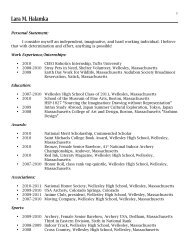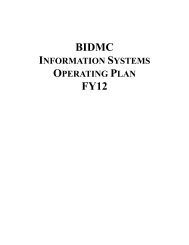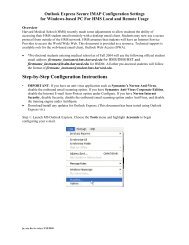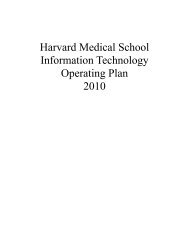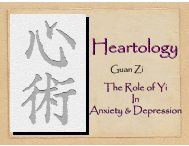SIMULATION CASEBOOK - MyCourses
SIMULATION CASEBOOK - MyCourses
SIMULATION CASEBOOK - MyCourses
You also want an ePaper? Increase the reach of your titles
YUMPU automatically turns print PDFs into web optimized ePapers that Google loves.
Gilbert Program in Medical Simulation<br />
Simulation Casebook<br />
Harvard Medical School Draft of the 1 st edition (2011), updated 3/2/12<br />
f. Treatment<br />
i. Effect of nitroglycerin: increased chest pain when preload and<br />
afterload drops in setting of aortic stenosis<br />
ii. Role of IV fluids: increase back flow to coronary arteries<br />
iii. More definitive management: will need echocardiography for the<br />
diagnosis and assessment of AS severity.<br />
iv. Stress imaging will also be important given the need to ROMI,<br />
however, if significant AS is found on echo, together with symptoms<br />
of angina, coronary angiography should be considered, given that<br />
noninvasive tests for cardiac ischemia are less accurate in AS<br />
patients<br />
3. Didactic material: Part II<br />
a. Pathophysiology<br />
i. LVH as a response to increased afterload<br />
1. Resulting S4<br />
2. Hypotension due to loss of atrial kick in atrial fibrillation<br />
and impaired filling of stiff ventricle<br />
ii. Rales: interstitium "popping open" against water surface tension<br />
iii. Atrial fibrillation and implications of rapid ventricular response<br />
iv. Troponin elevation due to leak secondary to strain from rapid<br />
ventricular response<br />
b. Treatment<br />
i. Effect of B-blocker on contractility and pressure<br />
ii. Urgent cardioversion to control rate given hemodynamic instability<br />
iii. Rate control if patient is hemodynamically stable<br />
iv. More thorough discussion on chemical/electrical cardioversion and<br />
aftercare<br />
v. Comment on classic symptoms of AS (syncope, angina, heart<br />
failure/DOE) and dramatic increase in mortality once patients<br />
become symptomatic<br />
IX.<br />
Development and Deployment<br />
This two step/paired case was developed as an exercise within the medical school’s physiology class, and<br />
is a required experience for the entire first-year class. It has been used for several years.<br />
X. Authors/Contributors<br />
Case drafted by James Gordon, M.D., with contributions and updates by the Gilbert Simulation Team.<br />
Compiled and formatted by Elan Guterman.<br />
Reviewed and edited with references by Jeffrey Siegelman, M.D. and Zoë Howard, M.D.<br />
XI.<br />
References<br />
Bonow, RO, Carabello, BA, Chatterjee, K, et al. ACC/AHA 2006 guidelines for the management of<br />
patients with valvular heart disease. A report of the American College of Cardiology/American Heart<br />
20



